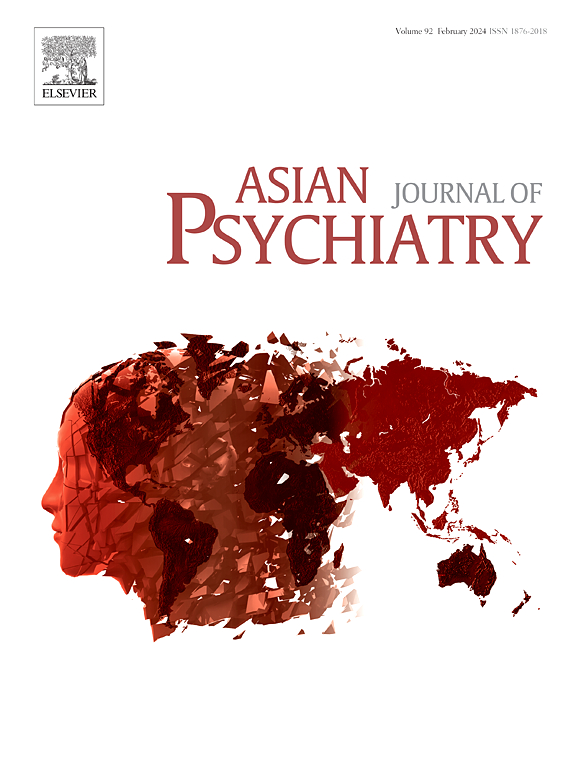与首发精神分裂症阳性和阴性症状相关的初级和次级奖励相关的神经回路的静息状态功能连接
IF 3.8
4区 医学
Q1 PSYCHIATRY
引用次数: 0
摘要
精神分裂症可以根据阳性和阴性症状进行诊断。然而,这些阳性和阴性症状的潜在病理生理学仍然知之甚少。在这项研究中,我们使用静息状态功能连接(rsFC)来评估与首发精神分裂症(FES)原发性和继发性奖励相关的神经回路的完整性及其与阳性和阴性症状的关系,以更好地了解阳性或阴性症状的生理和病理机制。方法对109例FES患者(原发性阴性症状34例(PNS),原发性阳性症状75例(PPS))和42例健康对照(hc)进行静息状态功能磁共振成像。rsFC采用基于区域利益的方法进行评估。结果FES患者在与初级和次级奖励相关的神经回路中均表现出rsFC的减少,PNS患者的rsFC减少幅度大于PPS患者。虽然PPS与较弱的rsFC相关,但与症状严重程度无关。相反,rsFC减少越多,阴性症状越严重。结论FES中与初级和次级奖励相关的神经回路中rsFC异常,在PNS中更为明显。本文章由计算机程序翻译,如有差异,请以英文原文为准。
Resting-state functional connectivity of neural circuits associated with primary and secondary rewards linked to positive and negative symptoms of first-episode schizophrenia
Background
Schizophrenia may be diagnosed based on the presence of positive and negative symptoms. However, the underlying pathophysiology of these positive and negative symptoms remains poorly understood. In this study, we used resting-state functional connectivity (rsFC) to evaluate the integrity of neural circuits associated with primary and secondary rewards in first-episode schizophrenia (FES) and their relationship with positive and negative symptoms to better understand the physiological and pathological mechanisms of positive or negative symptoms.
Methods
A total of 109 patients with FES (34 with primary negative symptoms [PNS] and 75 with primary positive symptoms [PPS]) and 42 healthy controls (HCs) underwent resting-state functional magnetic resonance imaging. The rsFC was assessed using a region-of-interest-based approach.
Results
Patients with FES exhibited reduced rsFC in neural circuits associated with both primary and secondary rewards, with greater reductions in those with PNS than in those with PPS. While PPS was associated with weaker rsFC than HCs, it did not correlate with symptom severity. Conversely, greater rsFC reductions were linked to more severe negative symptoms.
Conclusions
These findings suggest abnormal rsFC in neural circuits associated with both primary and secondary rewards in FES, with more pronounced impairments in PNS.
求助全文
通过发布文献求助,成功后即可免费获取论文全文。
去求助
来源期刊

Asian journal of psychiatry
Medicine-Psychiatry and Mental Health
CiteScore
12.70
自引率
5.30%
发文量
297
审稿时长
35 days
期刊介绍:
The Asian Journal of Psychiatry serves as a comprehensive resource for psychiatrists, mental health clinicians, neurologists, physicians, mental health students, and policymakers. Its goal is to facilitate the exchange of research findings and clinical practices between Asia and the global community. The journal focuses on psychiatric research relevant to Asia, covering preclinical, clinical, service system, and policy development topics. It also highlights the socio-cultural diversity of the region in relation to mental health.
 求助内容:
求助内容: 应助结果提醒方式:
应助结果提醒方式:


